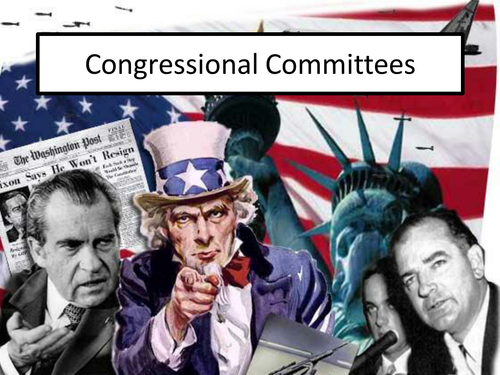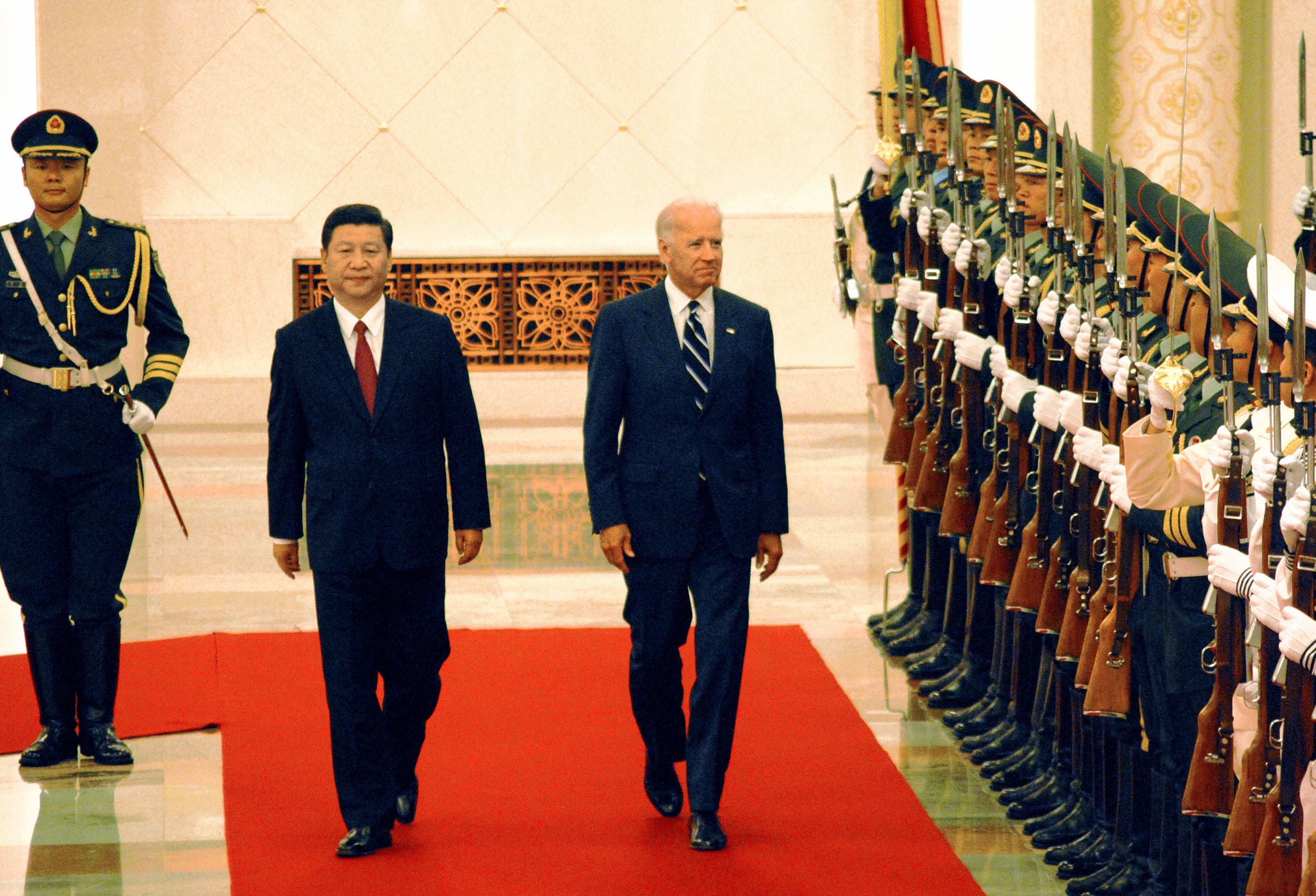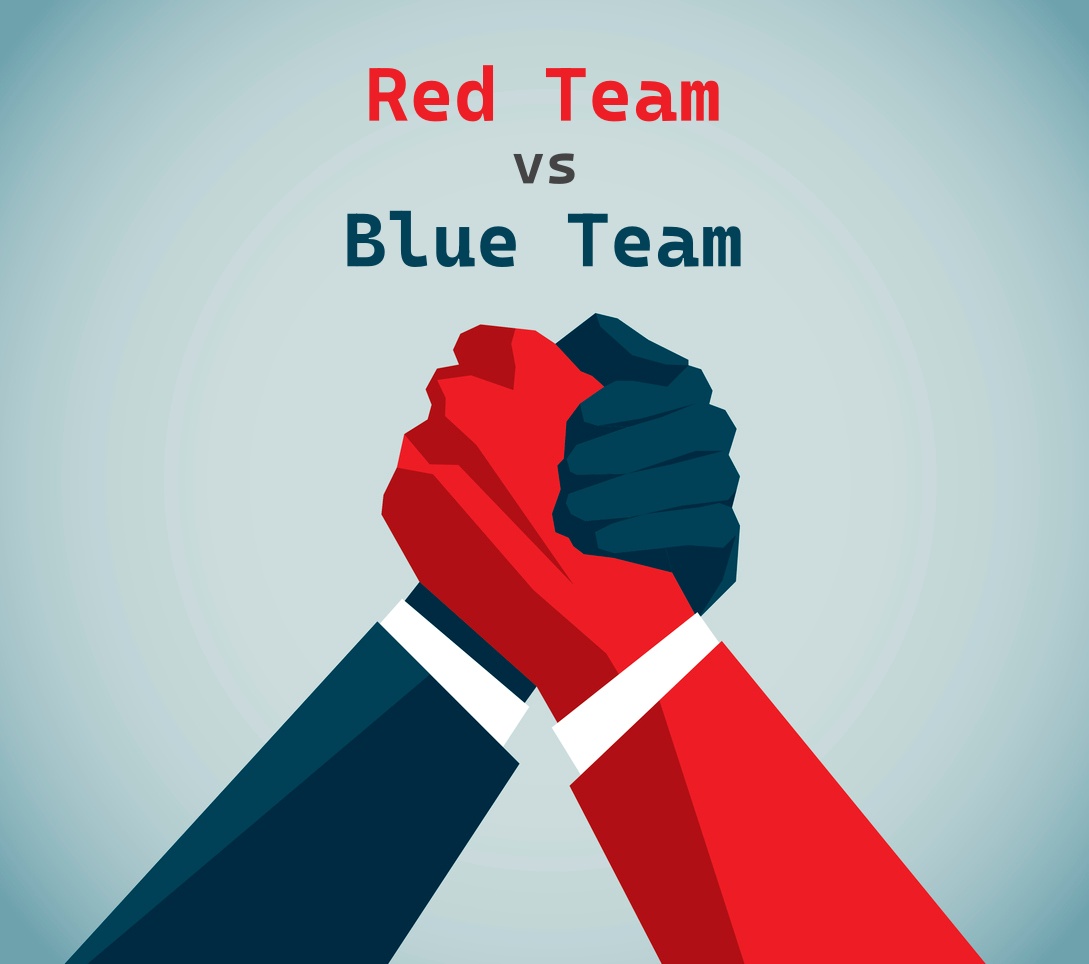/https://specials-images.forbesimg.com/dam/imageserve/1016058904/0x0.jpg%3Ffit%3Dscale)
The US Is Set on a Path to War
with China. What Is to Be Done?
J. Noh / Qiao Collective Newsletter
In this meticulously researched exposé, KJ Noh traces the genealogy of US geopolitical strategy in Asia and the Pacific, giving us an inside view of both the realpolitik of US imperial expansion and the architects behind it. Concluding with an analysis of 21st century US total informational warfare, Noh argues that the path to a kinetic war against China has been decades in the making. Once triggered, it could rapidly turn nuclear.
(Republished from Popular Resistance)
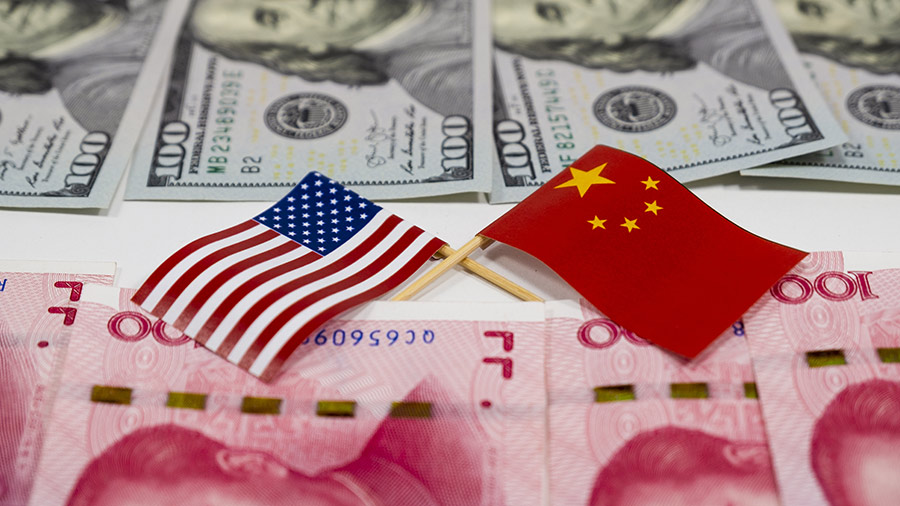
(February 8, 2024) — It was a gripping, stunning testimony. Before Congress, a 15-year-old volunteer nurse, Nayirah, struggled to compose her trembling voice, barely holding back tears, as she testified that marauding soldiers had thrown babies out of incubators in a hospital, leaving them to die on the floor.
Later, Amnesty International confirmed authoritatively that 312 babies had been killed this way. [1] All the news agencies ran with the story, and the country and Congress were in a total uproar.
There was only one problem: it was completely, utterly, totally fraudulent. It was engineered, perjured, coached testimony concocted by PR experts, designed to manufacture consent for a US war on Iraq.
At the time, it was also crystal clear that the claims were absurd—Kuwait had a population of less than 1.5 million at the time, and given its birth rate, would have had a few hundred premature babies a year. It’s inconceivable that over 300 of them could have been clustered in a single hospital on a single day.
Nevertheless, this was the story that was sold to the US people. Representative John Porter stated, “We have never heard… [such] a record of inhumanity and brutality and sadism…I don’t know how the people of the civilized countries of this world can fail to do everything within their power to remove this scourge from the face of the earth.”
Not long afterward, the US went to war with Iraq. It would wage war again, 12 years later, doubling down with even more monstrous lies about weapons of mass destruction.
Today, we are facing a similar situation: the US is escalating rapidly towards a shooting war with China, and similar absurd, astonishing, and monstrous lies are being spread. In fact, the US is already engaged in “multi-domain” “hybrid warfare” with China. This is warfare just below the threshold of direct military engagement. On the ground this involves:
- Economic Warfare: trade sanctions and tariff war, as well as technological warfare: attempted seizure of Chinese companies (TikTok); attacks on China’s international 5G contracts; sanctions on the primary & secondary supply chains of key sectors of Chinese industry (e.g. Huawei’s semiconductor supply chain); attacks on Ant Financial’s IPO.
- Legal Warfare, or “lawfare,” including over 380 anti-China bills in Congress, and 14 individual and state lawsuits against China for over $30 trillion in “Covid damages”; the long arm “legal” kidnapping of Huawei’s executive
- Diplomatic Warfare, including consulate shutdowns, harassment of diplomats, breaching of diplomatic pouches and compounds, and calls for regime change.
- Military Brinksmanship and posturing in the South China Sea, the East China Sea, the Taiwan straits; complete encirclement of China with strategic weapons, surveillance, and 400 offensive bases (“The Pacific Pivot”), the use of air bases in Taiwan for military surveillance, and plans to station intermediate range nuclear missiles all along China’s periphery. [2]
- Civil Subversion: color revolution, urban terror, destabilization and delegitimation operations in Hong Kong (and other places where China has interests), including millions of dollars of funneled for organization & training, and encrypted communications infrastructure built to coordinate anti-government activities.
- Academic Warfare: through the FBI’s China Initiative, every 10 hours a case is opened against a Chinese student or researcher in the US (currently 2700 cases) and all Chinese students are considered potential “non-traditional” “collectors” and “spies” involved in a “thousand grains of sand” collection strategy.
- Information Warfare: last but not least, we are seeing total Information warfare.
The stories about so-called “massive human rights abuses,” “Chinese concentration camps,” “Chinese-made-and-released Covid,” “China has harmed us economically,” “China has stolen its way to the top,” “China is oppressing independent Hong Kong,” are part of this information warfare.
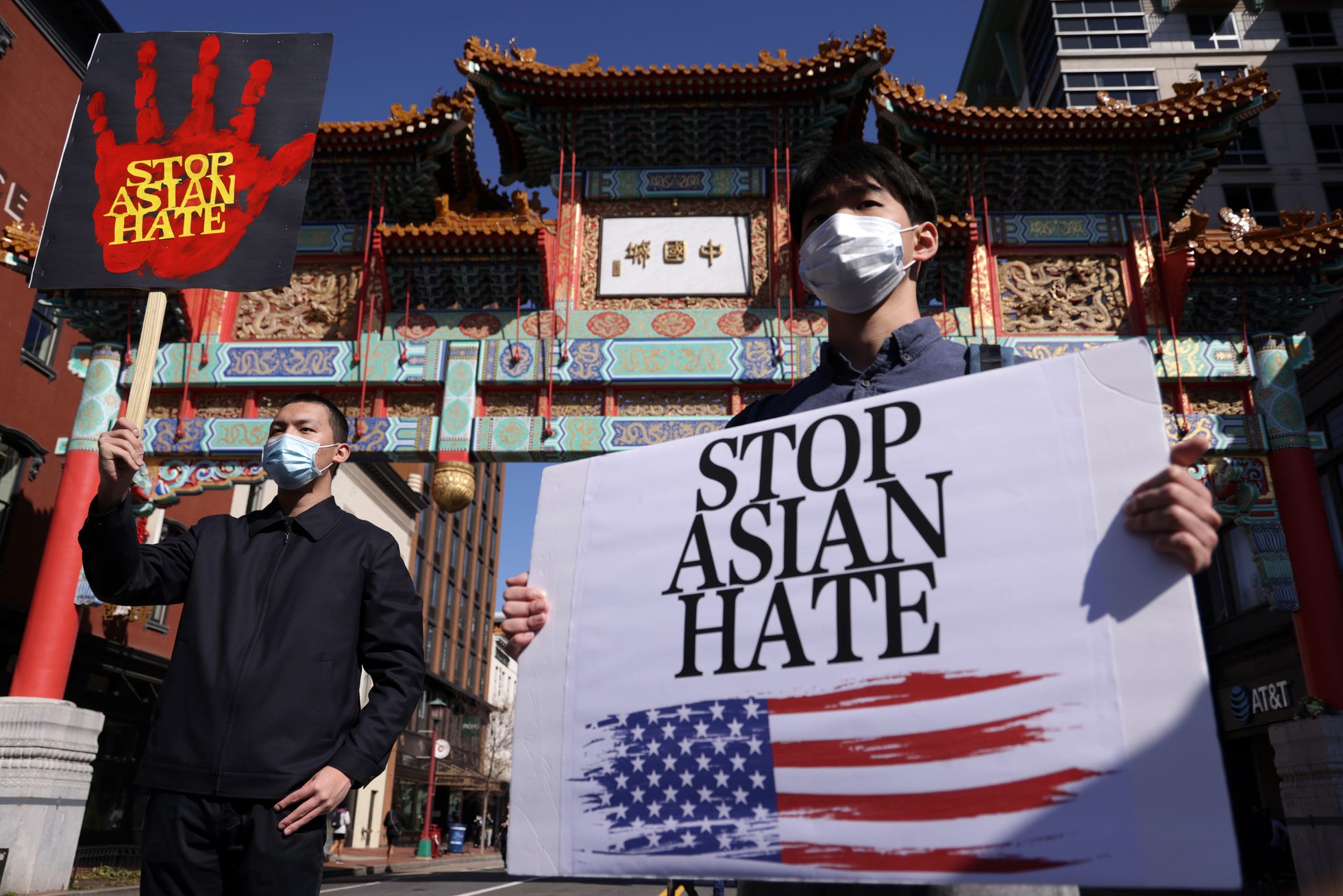
This mass propaganda incites people to hate China irrationally and unconditionally, to manufacture consent for war. The US military calls this information warfare, “the firehose of falsehoods” and we are all being drenched with these lies. This is necessary to justify war against an enemy and to curtail any rational discussion or questioning.
Some of the questions that the public are kept from asking are:
- Are these allegations supported by any facts?
- Has China threatened us? Is the US at risk from China?
- Is this war justifiable by any means? Is it legal?
- Do the citizens of the US want to go to war? Could the US even fight, let alone win a war with China?
A careful, reasoned approach to these questions, would lead one to say, No.
Before we try to play whack-a-mole with the blatant war propaganda, a more useful and clarifying approach is to ask, why is the US telling these lies to go to war?
For this, we have to look at history.
Why The US Is At War: Culture Shock
and the Challenge to Supremacy
The earliest European travelers were astonished to discover in China a country, in many ways, far more advanced than the West: a rich, diverse, multi-cultural civilization with sophisticated systems of governance, and vibrant cities built with complex systems of planning and management. Above all, they marveled at a harmonious multi-religious, multi-ethnic society, free of sectarian strife, and an inclusive merit-based [3] system of political power that selected the most competent people to govern and rule, regardless of creed, color, background, or religion. [4]
This contrasted the Western system of hereditary aristocratic rule within a society torn apart regularly with religious strife. These ideas of diversity, tolerance, inclusion, and earned—not inherited–privilege, would strongly influence the leaders of the Enlightenment, so much so that Western philosophers such as Voltaire and Leibnitz believed that the Chinese had “perfected moral science,” and that Chinese statecraft was the model for the West to emulate if it wanted to develop into an enlightened civilization.
These discoveries struck a hard blow at Christian and Western supremacy. Western colonization was built on a foundational belief that the West was more advanced, more evolved—closer to God—than the “barbarous” countries it was invading, subjugating, exploiting, and destroying. It needed at least the pretense of being more “advanced” to justify its colonial “civilizing mission.”
Reactionary thinkers like Herder—who had never visited China—lashed back rapidly by propagating a theory of the depravity of Chinese: that China was an “immoral land with no honor,” an “embalmed mummy” characterized by stagnation, in contrast with Western “dynamism.”
In addition, the Chinese system of meritocratic government was deeply troubling to a West built on stratified class privilege. A civilization without hereditary aristocrats was unfathomable and terrifying to the Western ruling class. Montesquieu, (borrowing from Giovanni Botero) thus concocted the trope that China’s more egalitarian system had to be “despotic”—despotic for him because it threatened the “liberties” (aristocratic privileges) of his class.
Hegel chiseled this canard into the Western consciousness with an armchair theory of “Oriental Despotism,” whereby the Chinese had failed to evolve due to inherent, characterological flaws in its people and its political culture. Marx chimed in with the “Asiatic mode of production,” and Weber and Wittfogel also reinforced it. These allegations of “despotism”—despite being total distortions of Chinese governance–have infused all Western discourses about China since.

Enter the Bandits
At the same time, “embalmed” Chinese “inferiority” notwithstanding, the West craved the exquisite consumer goods of China—tea, silk, porcelain—and this created huge trade imbalances. The Western response to balance the books was narco-trafficking: smuggling in industrial amounts of opium—at its peak, up to 9 million pounds a year.
When China objected and opposed this on sovereign and moral grounds and confiscated the drugs, war was declared. Reparations were forced, concessions extracted, and the country plundered, looted, and destroyed. In one show of force to the Chinese, the Summer Palace of the Emperor was sacked by Lord Elgin, which Victor Hugo described thus:
There was, in a corner of the world, a wonder of the world…. All that can be begotten of the imagination…was there…. Build a dream, a dazzling cavern of human fantasy with the face of a temple and palace…. This edifice, as enormous as a city, had been built by the centuries…. This wonder has disappeared.
One day two bandits entered the Summer Palace. One plundered, the other burned.
All the treasures of all our cathedrals put together could not equal this formidable and splendid museum of the Orient. It contained not only masterpieces of art, but masses of jewelry…. One of the two victors filled his pockets…the other…filled his coffers. And back they came to Europe, arm in arm, laughing away. Such is the story of the two bandits [England & France].
This violence, banditry, and racism, justified by the belief in the subhuman nature of the Chinese, became normalized practice against the Chinese over two centuries, and great American fortunes—Perkins, Astor, Forbes, Cabot, Delano (Roosevelt)—and Ivy league institutions at Harvard, Yale, Princeton, Columbia were built on this extraction and narco-trafficking.
Hewing to the belief that the Chinese were less than human, enterprising Euro-American drug barons pushed opium that addicted 10% of the population, essentially “roofie-ing” an entire nation and stealing its wealth. Just as US Southern wealth had been built on the decimation of black bodies through the slave trade, US East Coast wealth was built on the destruction of Chinese bodies through the drug trade, in what historian John K. Fairbank described as “the most long-continued and systematic international crime of modern times.”
Dehumanization, humiliation, assault, theft, rape, colonization, appropriation — these became the standard Western approach towards China and the Chinese; the Chinese people were “filthy yellow hordes,” an inferior, subhuman race, lacking agency, fit only to be colonized, exploited, enslaved, lynched, erased, and wherever possible, extinguished through race war. It would get worse.
Cold and Hot War: A Chinaman’s Chance
Inside US territory itself, the mythology of “yellow peril”—originally a German colonial war trope—became pervasive. Newspaper editor Horace Greeley, argued that the Chinese were “uncivilized, unclean, and filthy beyond all conception, without any of the higher domestic or social relations; lustful and sensual in their dispositions; every female is a prostitute of the basest order.”
Greeley, a progressive (who employed a young Marx as a reporter), was simply mouthing the platitudes of his day; much worse than rhetoric was the routine violence. Prefiguring similar present-day fears that Chinese were stealing jobs, wealth, or threatening America, thousands of Chinese were massacred, lynched, set on fire, expelled from their communities in the late 19th Century: in 1871, the LA Chinatown massacre, in 1880, the Denver Yellow Peril pogrom, in 1885 Wyoming Rock Springs massacre, the Issaquah Valley attack, the Arson of Seattle’s Chinatown, the Tacoma riot, in 1886 the Seattle Riot of 1886, the Oregon Hell’s Canyon massacre. “A Chinaman’s chance” became a common term: to be Chinese was to be subject to sudden death at any time at the whim of white people.
In response, the Chinese hid themselves inside ghettos where they could, fled pogroms, arson, and mass lynchings, and kept their heads down, “eating bitter” and trying to stay alive. Where they managed to settle down without being killed, they were subjected to cultural erasure, economic blockade, social isolation, a ban on owning property and businesses, and a proscription on marrying and having children, in short, planned elimination.
A minor respite during WWII, when the US allied itself with the Chinese KMT (Kuomintang) against the Japanese gave a small glimmer of reprieve, as local leaders tried to establish breathing space, and the Japanese took on the role of the “bad Asians.” This lasted until the Chinese communists liberated themselves in 1949, and wrested back their own country.
“China has stood up,” Mao declared, igniting jubilation throughout the third world and sending shockwaves of horror through the colonial west. This arrant act of self-liberation and self-determination—along with the US’s astonishment that the monstrous KMT fascists they had courted and funded had been trounced–unleashed a hysterical new wave of Sinophobia during the McCarthy era.
High-ranking Congressional committees demanded “Who lost China?”—as if it had been theirs—and purged the State Department of the moderate “China-hands,” who had been sympathetic or informed about China and its political institutions. A paroxysm of anti-China and anti-Asian hatred would shiver and fester throughout the cold war, burning, stoking and consuming itself through two hot wars (the Korean war and the Vietnam war), counterinsurgencies (Malaya), politicide (Indonesia), and smoldering on through the Nixon era, and crackling back alive to the flushed, red hot heat of the current moment.
In a country built on settler-colonial racism, this violent, racist, anti-China hatred—one of the most enduring legacies and traditions of the West—is the noxious Petri dish in which this propaganda for war is being cultured and vectored.
To this day, these stereotypes—ideological templates–are readily applied, for example, as regards Covid-19. In the Sinophobic Western press, Covid-19 is allegedly caused by dirty Chinese eating habits, dishonest cover-up, depraved indifference to life, despotic suppression of information, and dangerous intent towards the West. In a word, the Chinese are dirty, dishonest, depraved, despotic, and dangerous. Every day, these racist slanders are plastered and repeated, ad nauseam and ad infinitum, in Western outlets like The Guardian, The Washington Post, or The New York Times, and then catapulted into orbit by Twitter and Facebook.
White supremacy and its attendant anti-Asian fear and hatred are some of the oldest, most enduring, most deep-rooted hatreds in the Western mind. Underneath the shallow topsoil of civility and liberal tolerance, it festers and simmers in angry, molten layers of the subconscious, quick to flare up in white-hot violence at any perceived slight or challenge to white superiority, and rapidly weaponized as political expediency requires.
Realpolitik: Opening and Closure
Miraculously, during the 70’s, a battered and bruised US, humbled from defeats in the Vietnam war, and seeking a realpolitik to untangle the quagmire, decided to open relations with China to counterbalance the Soviet Union. Despite over a century of hatred, and the containment of the Russians for being an “Asiatic Race,” the US normalized relations with Chinese, and thus began a short, temporary, realist honeymoon, a brief respite from this race-baiting and race hatred.
This idyll was not to last. After the fall of the Soviet Union in 1989, two things became readily apparent: 1) there was no further political need to engage with China, since the primary reason (the threat of the Soviet Union) had gone away, and 2) it was clear for anyone understanding history and geography that China could become a challenger to the United States itself, due to its size, capacity, and dynamism.
Thus the long, unabated, and persistent thread of anti-China hatred—red-scare-yellow-peril-thinking, reinvigorated again with the persistent white fragility about new challenges to supremacy—came back with a vengeance. Despite continued engagement with China from the Nixon to the Clinton era, Sinophobia remained a silent, underground political force with a tremendous gravitational pull. Two groups were important in giving these forces concrete shape and form.

The Empire Strikes Back: Yoda And His Jedis
Andrew Marshall, who died last year in March, was often referred to as “Yoda.” He was the Pentagon’s Oracle, directing its secretive internal think tank, the Office of Net Assessment, for 42 years, and was top advisor to 12 Secretaries of Defense. Originally part of an elite group of econometric thinkers at RAND (Herman “Strangelove” Kahn, James Schlesinger, Daniel Ellsberg, Albert Wohlstetter), they worked on game theoretic & stochastic modeling of complex phenomena, and on how to strategize the unthinkable and the insane: how to win at nuclear Armageddon.
Throughout his long tenure at the inner sanctum, Marshall had two key obsessions: US military supremacy, first against the Soviet Union, then after the fall of the USSR, against China. Post-1991, he became singularly obsessed with preventing China’s rise to power. Using a deft mixture of threat inflation (through recondite “net” assessments & heterodox “team B” reviews), classified white papers, cryptic pronouncements to the power elite, and the incessant cultivation of a cult of loyalists, Marshall kept the Pentagon’s gravy train running on time, while instilling in his followers a paranoid, “long durée” mindset of endless and moving threat inflation.
Throughout his long tenure at the inner sanctum, Marshall had two key obsessions: US Military supremacy, first against the Soviet Union, then after the fall of the USSR, against China. Post-1991, he became singularly obsessed with preventing China’s rise to power.

Marshall’s proteges, Wolfowitz, Cheney, Rumsfeld, Cohen, Krepinevich, Pillsbury, Herman Kahn, Richard Perle, Richard Armitage, Michael O’Hanlon, and countless other neocon heavyweights were graduates of “St. Andrew’s Prep School” or the “Church of St. Andrew,” and mentored into Marshall’s world view and strategies.
These ideologues had suckled at the woozy philosophical teat of Leo Strauss (imagining they were imbibing Plato, Hegel, or Kojeve) and graduated from Ivy institutions funded from Chinese opium smuggling. Marshall fed them solid food, C-rations, and the bloody red meat that cut and sharpened their fangs for ideological and political battle.
In 1992, a fully teethed group of Marshall’s neocon protegés penned the Defense Guidance Planning (DPG) document that came to be known as the “Wolfowitz Doctrine.” A preposterous, overweening document, embarrassing upon leakage for its hubris, irrationality, and illegality, it was immediately disavowed but not discarded. A few years later, it was redacted and upgraded into the PNAC (“The Project for a New American Century”)’s Mein Kampf-like document, “Rebuilding Americas Defenses.”
This was, in essence, an unhinged plan for total world domination (“unipolar global dominance”) in all domains of war (“full spectrum dominance”), unfettered by international law or any sense of proportion, rationality, or morality. Borrowing from the DPG its call for the unencumbered use of aggressive, pre-emptive war, including the use of nuclear and biological warfare, it postulated a “Pearl Harbor-like” incident to operationalize. Not long after, this doctrine became realized under Rumsfeld and Cheney, bringing us the chaos, murder, tragedy of Iraq and Afghanistan and the endless catastrophic wars of the post-Bush years.
Contemporaneously, with the Soviet Union dissolved, and the US pressing NATO right up against the flank of Russia, the US also began to cross-hatch the contours of a containment strategy against an emerging China, the next potential challenger to US global domination.

Marshall and his Jedis began explicit, long-Sterm countermoves. Even as the Middle East continued to spiral into chaos, yet more wide-ranging and ambitious plans were hatched against the Middle Kingdom. A strategy to withdraw from the Intermediate Nuclear Forces Treaty (INF) was initially floated (and later, with the blessing of the CFR, circulated, and eventually implemented). Aggressive forward bases were planned in the early 2000’s, then built in East Asia along the first island chain, placing deadly and destabilizing strategic weaponry right up against China’s throat and belly. New alliances and strategies were drawn up, and old alliances reinforced and rekindled, and a dangerously empire-nostalgic Japan was enabled in erasing history and remilitarizing to the hilt as the spear tip against China.
Eventually, as all these pieces fell into place, Hillary Clinton would stage the coming out party: the declaration in 2011, of the “Pacific Pivot/Pivot to Asia” in Foreign Policy Magazine. Clinton’s debutante declaration was a dog-whistle marvel of cant and obfuscation. A plan to move 60% of US firepower to encircle and contain China through bases, weaponry, and alliances, while engaging in multi-domain hybrid warfare, was sold as a “historical rebalancing.” With the blessing of Obama’s cabinet, Marshall’s China threat was finally getting policy primetime.
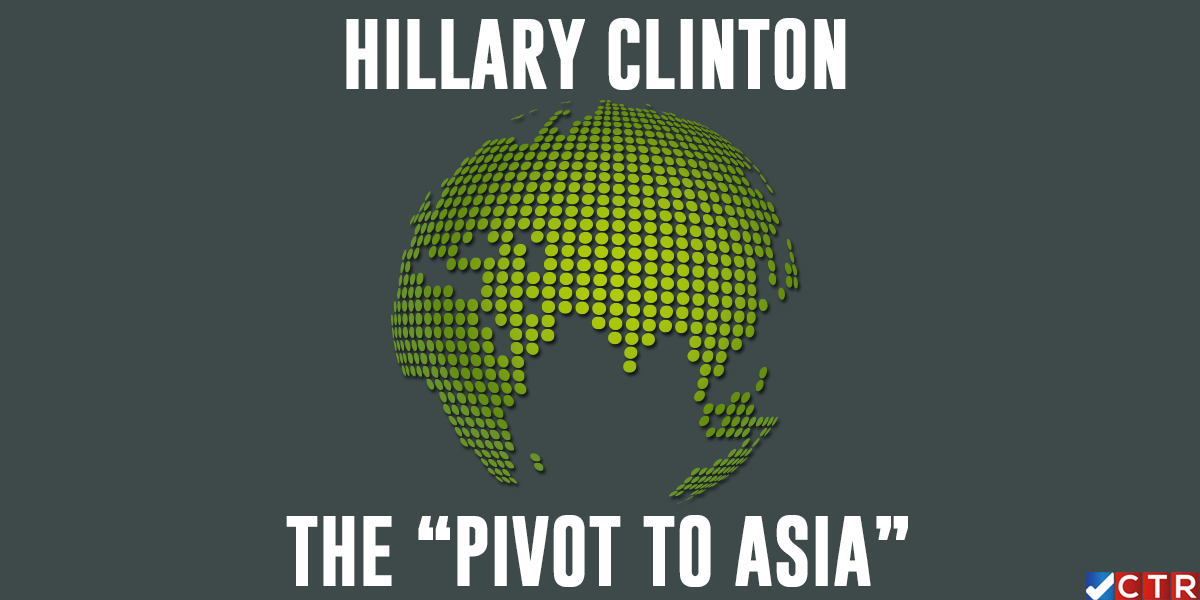
During this time, another of Marshall’s busy, brainy proteges, military officer Andrew Krepinevich, started to work out the nuts and bolts of actual war with China. At the CSBA (Center for Strategic Budgetary Assessment), Krepinevich, under Marshall’s guidance and funding, wrote out the details of the war doctrine against China, “AirSea Battle”—a China-directed counterpart to the Soviet-era “AirLand Battle”—involving decapitating and blinding strikes deep into Chinese territory, and instantiating Marshall’s “revolution in military affairs” for US supremacy in the Western Pacific theater of war. RAND and the CFR chimed in, rendering into granular and global detail the strategies and order of battle.
Another of Andrew’s powerful proteges was Michael Pillsbury. A serious operator, Pillsbury had assisted in the creation of the regime change “governmental” NGO known as the NED, the weaponization of the Mujahideen in Afghanistan, the implementation of politicide in Latin America (known as the Reagan Doctrine), but most importantly, he was credited with initiating the idea of the “China card” in 1973. Under the good offices of Marshall, Pillsbury published a book called “The Hundred Year Marathon,” scripting a fact-free document of paranoid threat inflation, racist scare-mongering, and orientalist slander that is now standard China doctrine. In an alphabetic royal flush of Sinophobes (Lighthizer-Mnuchin-Navarro-O’Brien-Pillsbury-Pompeo-Pence-Ross), Pillsbury was the most important “China authority” of Everything Under the Heavens in the Trump Kingdom of Sinophobia.
Recommended: What Does Critique Do?
On the Critical Predation of China
China Syndrome: Blue Team, Red Team
As the original US reason for allying with Beijing—to counterbalance Moscow—became moot, another group of China-bashers, far-right ideologues with sharp axes to grind from the Cold War also began to crawl out of the cracks. Calling themselves the “blue team” or “panda sluggers,” they derided the US “panda-hugging” business class who wanted continued engagement with China, seeing China only as a mortal and irreconcilable communist threat. During the Clinton administration, they formed a loose coalition, coming together with funding under PNAC, using the Washington Times and Weekly Standard as their platforms.
Although the “Blue Team” had no official members, published no formal policy statements, and had no offices—initially meeting in a garage, then at the Tabard Inn on N Street—they included key Congress members and staff, think tankers, journalists, and lobbyists.
Among them, former CIA analyst William C. Triplet and congressional staffer Edward Timperlake went on to write a lurid series of conspiracy books alleging quid-pro-quo between Clinton and China (Year of the Rat; Red Dragon Rising). This was a bizarro world where Taiwanese lobbyists with Chinese Mafia connections were acting as agents for the PRC government and manipulating the White House.
They also alleged Chinese theft of military secrets, slave labor, the proliferation of WMD to Iran and other “rogue” states, and insinuated that Clinton’s “constructive engagement” was knowingly undermining the US for the benefit of the Chinese. These allegations put into ink a conspiratorial mythology about a dangerous, corrupt, and belligerent China, echoes that fed into an existing subterranean current of paranoid lies about China.
These “blue team” members, cross-pollinating with Marshall’s proteges, were a rogues gallery of high-powered political operators: Michael Ledeen, Frank Gaffney, Robert Kagan, Bill Kristol, Michael Pillsbury, Bill Gertz, Gary Bauer, Peter Navarro, Elliot Abrams, Richard Scaiffe, John Bolton were among those listed as “members.” Dana Rohrabacher, Tom DeLay, Nancy Pelosi, Robert Byrd were also considered to be fellow travelers.
These people built powerful commissions and institutions focused on attacking China, including the Congressional Executive Commission on China (CECC), the US-China Security Review Commission. The Taiwan Security Enhancement Act was also written during this time. In particular, the CECC appointed itself watchdog of Chinese trade, technology, labor and human rights, saturating Congress with an unending “blue team” litany of Chinese “abuses.”
The most virulent and extreme of all these China hawks was Frank Gaffney, who recycled the alarmist Cold War group, “Committee on the Present Danger,” into the current “Committee on the Present Danger: China,” contending that “there is no hope of coexistence with China.” Gaffney’s ideology and guiding principles coincide with official positions on China and key US foreign policy; moreover, Secretary of State Mike Pompeo’s speech and actions on China reflect his close affiliation and affinity with Gaffney.
What the Pivot is:
The Geostrategy of China-bashing
Much of the “blue team’s” ideology and theorizing followed pre-existing currents of ideological posturing and hate-speech but have incorporated sharper geopolitical and geo-economic dimensions.
Western history can be seen as having several inflection points: one was 1492, the advent of the “Columbian Era.” The Columbian era is the era of sea-faring, sea-power-based Western colonial and imperial empires. The demise of the Columbian era was foreshadowed by an Oxford geographer in 1904 who put forth what is now known as the “Heartland Theory.” In a nutshell, it is a land-based theory of power that predicts the end of sea-based powers: “Who rules East Europe (Eurasia) commands the Heartland; who rules the Heartland commands the World-Island; who rules the World-Island commands the world.”
It also concluded that “Were the Chinese [to] conquer its territory [of the Russian Empire], they might constitute the yellow peril to the world’s freedom.” This maxim and the anxiety it provoked was red-lined in Brezinski’s “Grand Chess game”: “No Eurasian challenger should emerge that can dominate Eurasia and thus also challenge US global pre-eminence.”
In 1992, Marshall’s protégé, Paul Wolfowitz formulated the above strands into a formal doctrine, in the above mentioned DPG (Defense Planning guidance) document:
Our first objective is to prevent the re-emergence of a new rival…that poses a threat on the order of that posed formerly by the Soviet Union…to prevent any hostile power from dominating a region to generate global power…. The US must…protect a new order that [convinces] potential competitors that they need not aspire to a greater role or pursue a more aggressive posture to protect their legitimate interests. In non-defense areas, we must…discourage them from challenging our leadership or seeking to overturn the established political and economic order. We must maintain the mechanism for deterring potential competitors from even aspiring to a larger regional or global role.
This can be better understood by looking at a map:
This is a map of the world, drawn from a topologist’s eye. It shows relationships, not distances or area. From this map you can note the following things:
- China has more borders than any other country in the world. This also gives it the possibility of connecting with more countries than any other.
- Blue lines/corridors are oceans: The top two thirds is the “world island” or “pivot state”–it contains most of the world’s population, resources, and wealth, and it can be connected as a single entity through overland routes or short ocean hops.
- The bottom is the Americas. It is topologically isolated from the world island. As sea lane control becomes less important, it will also lose prominence and relative power if the world island unifies. It’s clear that unifying power will probably arise in China, whose overland paths using high-speed rail, roads, pipelines, and ports can be easily built and connected, in a “new silk road.”
- The US needs to fracture the world island to maintain its global power. If you color in the places where China is encircled, or where the US is waging war/fracturing societies/creating chaos, this is exactly where the fault lines of the global conflict are, and reveal what US strategy is.


